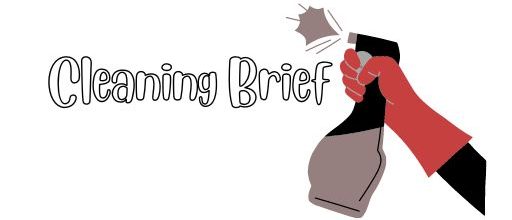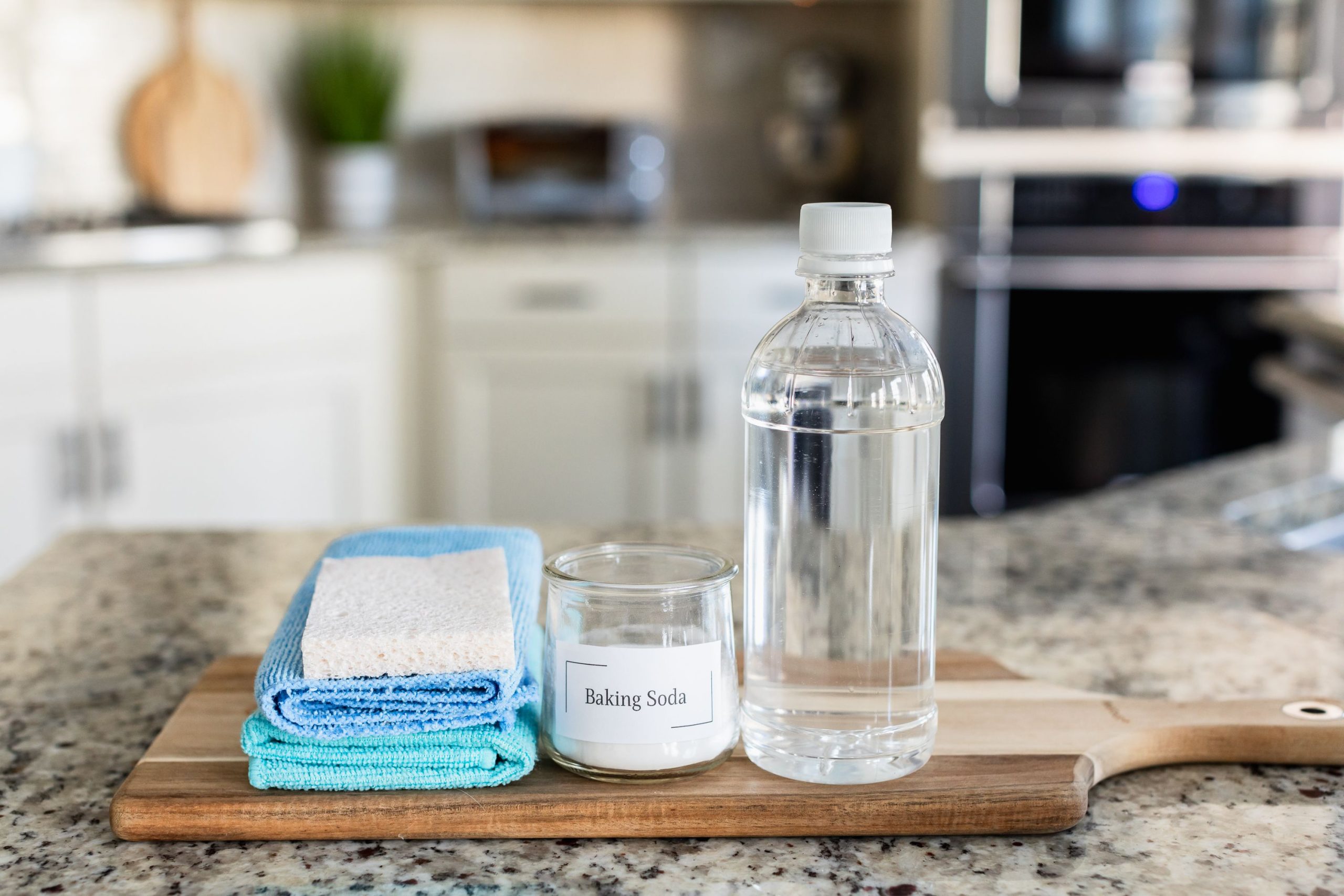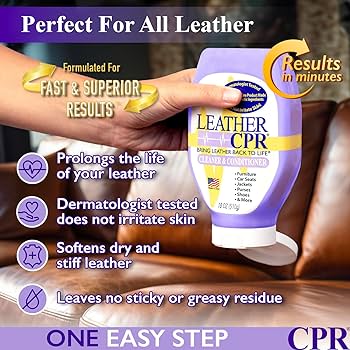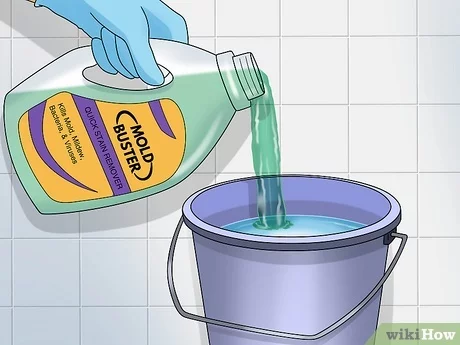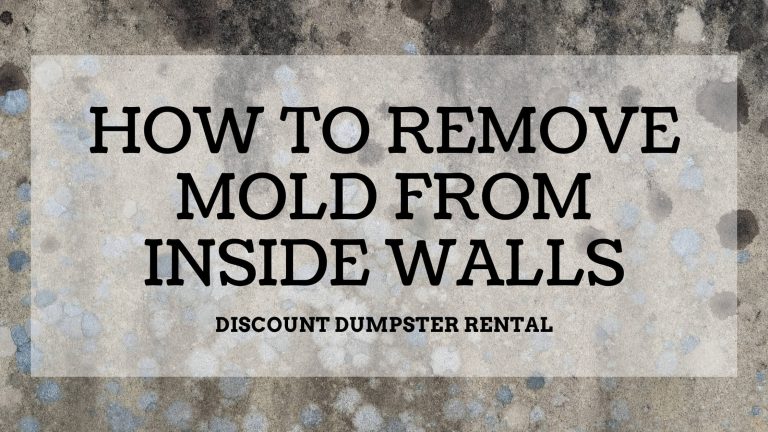How to Clean Mold from Drywall: Expert Tips for a Spotless and Safe Home
To clean mold from drywall, mix equal parts of water and bleach, apply the solution to the affected area, scrub with a brush, and then rinse with clean water. Mold is a common problem in many households, and it can be particularly problematic when it grows on drywall.
Not only is it unsightly, but it can also cause health issues if left untreated. Thankfully, there are steps you can take to effectively clean mold from drywall and prevent its growth in the future. We will explore the most effective method for removing mold from drywall and provide some tips for preventing its return.
By following these guidelines, you can ensure a clean and mold-free home. So, let’s get started and learn how to tackle this issue head-on.

Credit: www.facebook.com
Identifying Mold On Drywall
Identifying mold on drywall is crucial for preventing its spread and potential health hazards. Visual signs and odor are two key indicators of mold presence. By being aware of these signs, you can take prompt action to remove the mold and protect your home and family.
Visual Signs
Mold on drywall can appear in different forms, colors, and patterns. It may present as black, green, or brown spots or patches. These spots can be fuzzy, slimy, or powdery in texture. If you notice any discoloration on your drywall, especially in areas prone to moisture such as bathrooms or basements, it is essential to investigate further.
Inspect the affected area closely for visible mold growth. Use a flashlight to examine corners, behind furniture, or under carpeting if applicable. Mold can also grow in hidden spaces, such as behind drywall, so make sure to check for any signs of dampness or discoloration.
Odor
Mold often emits a distinct and unpleasant odor. If you notice a musty smell in a particular area of your home, it could be an indication of hidden mold growth. This odor is caused by the volatile organic compounds (VOCs) released by mold spores. While it is normal for homes to have a certain smell, any persistent musty odor should not be ignored.
Pay attention to areas with poor ventilation or high humidity levels, as they are more susceptible to mold growth. Bathrooms, kitchens, laundry rooms, and basements are common areas where mold odor may be noticeable.
Regularly inspecting your drywall for any visual signs of mold and being aware of any musty odors can help you prevent the spread of mold and ensure a healthier living environment.
Safety Precautions Before Cleaning
Cleaning mold from drywall is essential to maintain a healthy living environment. However, before you begin the cleaning process, it is crucial to prioritize safety precautions. By following proper safety measures, you can effectively remove mold from your drywall without putting your health at risk. In this section, we will discuss two key safety precautions to consider: protection gear and ventilation.
Protection Gear
To protect yourself from harmful mold spores, it is vital to wear appropriate protective gear. This includes:
- Gloves: Wear disposable gloves to prevent direct skin contact with mold and cleaning agents.
- Goggles: Protect your eyes by wearing goggles to prevent any mold particles from entering your eyes.
- Respirator: N95 respirators or masks with comparable filtration capabilities should be worn to filter out airborne mold spores.
Ventilation
Ensuring proper ventilation is necessary during the mold cleaning process. Mold spores can spread through the air, so it is essential to prevent their circulation within the confined space. Follow these ventilation guidelines:
- Open Windows: If weather conditions allow, open windows to let fresh air in and stagnant air out.
- Use Fans: Utilize fans to increase air circulation, helping to reduce the concentration of mold spores in the room.
- Avoid Air Conditioning: Turn off your air conditioning system as it can spread mold spores throughout the house.
By adhering to these safety precautions, you can minimize your exposure to mold spores and create a safer environment for mold removal.
Tools And Supplies Needed
To effectively clean mold from drywall, you will need the right tools and supplies in order to ensure a safe and thorough cleaning process. Here are the essential items you will need:
Protective Equipment
- Gloves: Rubber or latex gloves to protect your skin from direct contact with mold and cleaning solutions.
- Protective Eyewear: Safety goggles or glasses to shield your eyes from mold spores and cleaning agents.
- Respirator: N95 respirator mask to prevent inhalation of mold spores during the cleaning process.
Cleaning Agents
- Bleach: A common household bleach solution (1 part bleach to 10 parts water) for killing mold on non-porous surfaces.
- Vinegar: White distilled vinegar for removing mold from porous surfaces and acting as a natural disinfectant.
- Mild Detergent: A gentle dish soap or detergent for cleaning mold from walls and other surfaces.
- Baking Soda: A natural and mild abrasive cleaner that can help remove mold and odors.
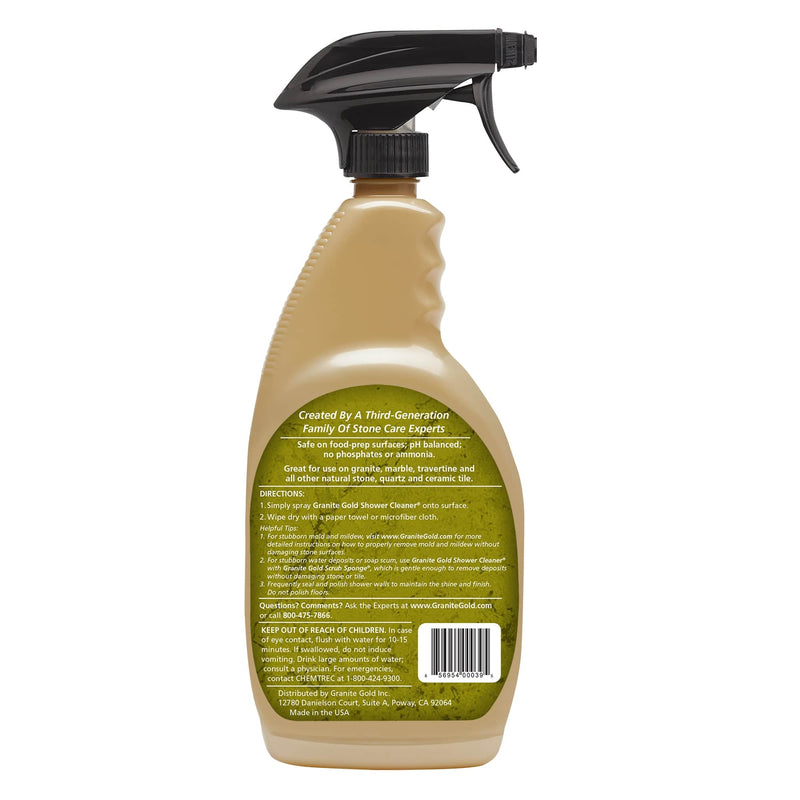
Credit: granitegold.com
Step-by-step Cleaning Process
For cleaning mold from drywall, begin by sealing off the affected area and wearing protective gear. Next, scrub the mold with a mixture of detergent and water, and rinse thoroughly. After drying the area, apply a mold-resistant primer and repaint.
Regularly monitor the area to prevent mold re-growth.
Cleaning mold from drywall is crucial to prevent the spread of spores and ensure a safe living environment. Following a step-by-step cleaning process can help effectively eliminate mold and restore the health of your drywall. Below, we have outlined each step, from preparation to cleaning and disposal.
Preparation
Before you begin cleaning mold from drywall, it is important to take the necessary precautions to protect yourself and others in your home. Here’s how to prepare:
- Ensure proper ventilation by opening windows and using fans. This helps to reduce the concentration of mold spores in the air.
- Wear protective clothing, including disposable gloves, safety goggles, and a face mask, to prevent direct contact with mold and its airborne particles.
- Remove any furniture or objects near the affected area to create a clear workspace.
Once you have prepared, you are ready to start the cleaning process.
Cleaning And Disposal
Now that you have taken the necessary precautions, here’s how to clean mold from drywall:
- Begin by gently scrubbing the moldy area with a mixture of water and detergent. Use a soft brush or sponge for this step.
- Rinse the area with clean water to remove any residue.
- For stubborn mold stains, you can use a solution of equal parts water and bleach. However, be cautious when using bleach as it can discolor or damage certain surfaces. Test it on a small, inconspicuous area first.
- If the mold is still present after cleaning, you may need to cut out and replace the affected drywall. This is recommended for severe cases of mold infestation or when the drywall is extensively damaged.
After you have finished cleaning, it is important to properly dispose of any materials contaminated with mold. Follow the guidelines provided by your local waste management authority to ensure safe disposal.
By following these step-by-step instructions, you can effectively clean mold from drywall and maintain a healthy living environment.
Preventing Mold Reoccurrence
Preventing mold reoccurrence on drywall requires thorough cleaning using a mixture of water and detergent or bleach, ensuring complete removal. After cleaning, it is essential to address any underlying moisture issues and maintain proper ventilation to prevent future mold growth.
Addressing Moisture Sources
To prevent mold reoccurrence on your drywall, it is crucial to address the underlying moisture sources that encourage mold growth. Here are a few steps you can take:
- Fix any leaks: Inspect your plumbing system for any leaks and promptly fix them to prevent water from seeping into your walls.
- Improve ventilation: Ensure adequate airflow in your home by opening windows or using fans to reduce moisture accumulation.
- Control humidity levels: Use dehumidifiers in areas prone to high humidity, such as basements and bathrooms, to maintain optimal moisture levels.
- Properly seal windows and doors: Check for any gaps or cracks around windows and doors and seal them with weatherstripping to prevent water infiltration.
- Redirect downspouts: Ensure that downspouts are properly directing water away from your home’s foundation to prevent moisture from seeping into the walls.
Regular Inspections
Regular inspections are key to identifying and addressing potential mold problems before they become major issues. Here’s what you need to keep in mind:
- Inspect hidden areas: Regularly check behind furniture, in closets, and other hidden areas where moisture may accumulate and mold can grow undetected.
- Check for signs of water damage: Look out for water stains, discoloration, or peeling paint on the walls, as these can indicate hidden moisture issues.
- Monitor indoor humidity: Keep an eye on indoor humidity levels using a hygrometer and take action if they consistently exceed recommended levels.
- Consider professional inspections: If you’re uncertain about potential mold problems or suspect a large-scale infestation, it’s advisable to seek professional guidance.
Maintaining a proactive approach by addressing moisture sources and regularly inspecting your drywall can significantly reduce the chances of mold reoccurrence. By implementing these preventive measures, you can ensure a healthier and mold-free environment for you and your family.

Credit: www.procleannotsomekid.com
Frequently Asked Questions On How To Clean Mold From Drywall
How Does Mold Grow On Drywall?
Mold can grow on drywall when it’s exposed to moisture for an extended period. The spores present in the air settle on the wet surface and start thriving. These spores can come from various sources like leaks, high humidity, or condensation.
Can You Clean Mold From Drywall?
Yes, you can clean mold from drywall, but it’s important to take proper precautions. Use a mixture of water and detergent to scrub the affected area. If the mold has penetrated the drywall, it may need to be replaced to fully eliminate the problem.
What Are The Safety Measures When Cleaning Mold From Drywall?
When cleaning mold from drywall, wear protective gear like gloves, goggles, and a mask to prevent exposure to mold spores. Make sure the room is well-ventilated during the cleaning process. If you have a large mold infestation or are unsure, it’s best to consult a professional.
Is Bleach Effective In Removing Mold From Drywall?
While bleach can help in removing mold from non-porous surfaces, it is not recommended for use on drywall. Bleach can kill the visible mold on the surface but cannot reach the mold that has grown within the drywall. It is best to use proper mold cleaners or consult professionals for effective mold removal.
Conclusion
Removing mold from drywall requires proper safety precautions and effective cleaning techniques. By using natural solutions like vinegar or hydrogen peroxide, and following the necessary steps, you can effectively eliminate mold from your walls. It is essential to address mold growth promptly to prevent further damage and promote a healthy environment in your home.
